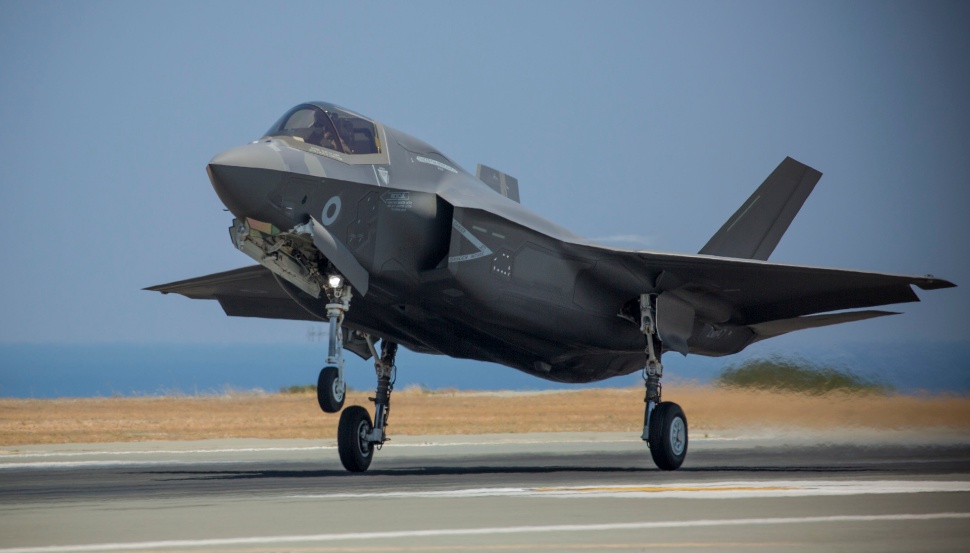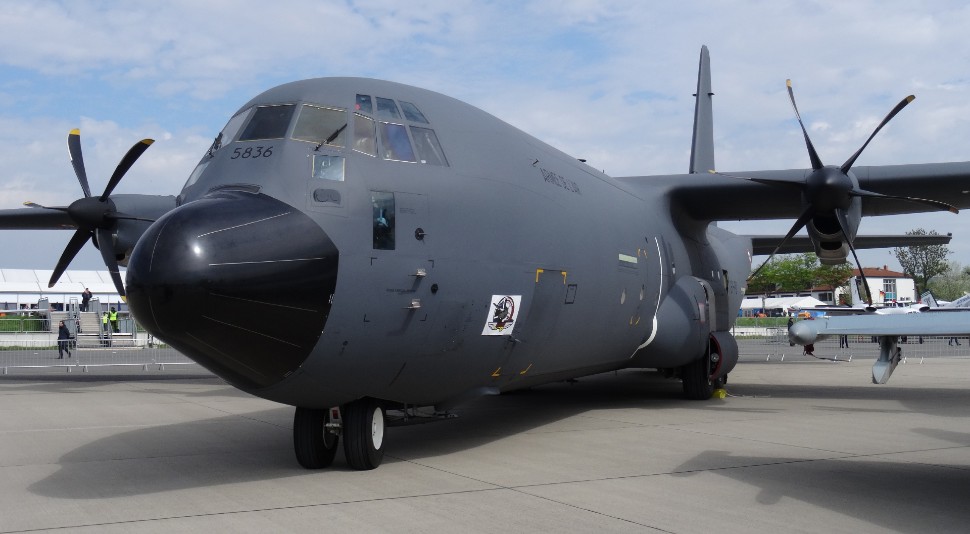Lockheed Martin is eyeing increased opportunities to deliver a broad range of defence products to European customers, with the F-35 Lightning II holding particular appeal as the company continues to drive down the cost of its fifth-generation stealth fighter.
Already counting NATO nations Italy, the Netherlands, Norway and the UK as F-35 operators, while first examples for ostracised partner Turkey have also been handed over to support training activities in the USA, Lockheed is viewing multiple further opportunities in the region.

Crown Copyright
Poland earlier this year announced its intention to buy 32 conventional take-off and landing F-35As via an accelerated Harpia procurement. The aircraft will replace its aged RAC MiG-29 fighters and Sukhoi Su-22 ground-attack aircraft, and its requirement could eventually total 48 airframes.
Lockheed Martin International executive vice-president Rick Edwards says the company intends to have a letter of acceptance process completed with the nation by 1 September, to coincide with a planned visit to Warsaw by US President Donald Trump.
An existing operator of Lockheed F-16C/Ds, Poland could seek to take delivery of its stealth fighters from as soon as 2022, although Edwards notes that with pilot and maintainer training and infrastructure work also required, “it’s a lot more than just getting them the aircraft”.
Other potential future European customers for the F-35 identified by the US Department of Defense’s F-35 programme director Vice Admiral Mathias Winter earlier this year include Greece, Romania and Spain. The type – which was late last year picked as Belgium’s future combat asset via a 34-aircraft deal – is also involved in a competition in Switzerland, facing the rival Boeing F/A-18E/F Super Hornet, Dassault Rafale and Eurofighter Typhoon.
“Four years ago, we had very little work in Europe in our [long-range] plan,” Edwards told FlightGlobal at the Paris air show last month. “Now, Europe’s our fastest-growing market, and countries that we didn’t think we’d be doing much work in – Poland, Slovakia, Bulgaria – are all key markets where there’s a lot going on.”
THREAT RESPONSE
Calls by NATO for its member states to increase their defence spending to counter an unpredictable Russia are having an effect, according to the Lockheed official.
“The neighbourhood is changing, there are threats there, and central and eastern Europe are taking the 2% [of GDP spending] mandate seriously,” he says. “Everybody is growing, but they are really growing at a very high rate.”
According to an estimate published by NATO on 25 June, Poland’s defence spending is expected to hit 2.01% of GDP in 2019, while Romania’s investment is projected at 2.04%. By contrast, of the 12 founding members of the 70-year-old Alliance, just two – the UK and the USA – will meet this spending target.
In a highly significant move affecting its flagship fighter, Lockheed and the US F-35 Joint Program Office recently reached a so-called “handshake agreement” for a three-year production run of 478 aircraft. Covering low-rate initial production lots 12-14, the arrangement could be valued at $34 billion, and will enable the airframer to achieve a key target of producing an A-model example at a unit cost of $80 million.
Pointing to the price of rival combat aircraft, Edwards notes: “I’ll contend that $80 million is a great deal for a fifth-generation capability that is really unsurpassed. Bringing that price down where it’s at parity or better than a fourth-generation [fighter] just makes the plane even more attractive to potential customers.”
For current and future users, additional initiatives being pursued in a bid to lower the F-35’s operating costs could include updates to its Pratt & Whitney F135 engine, Lockheed says.
“Anywhere there is a competition that involves the F-35 and you get pilots into the plane and they see the capability, the F-35 does exceedingly well,” Edwards says. Pointing to its success in Belgium and the pending deal with Poland, he adds: “When they get the classified briefings of what an F-35 does to their force, we more than likely will win. That’s a good place to be.”
Some short-term disruption looks likely, however, due to an ongoing dispute between Washington DC and Ankara over the latter’s purchase of Almaz-Antey S-400 long-range air-defence equipment from Russia. But while the US government has halted deliveries of the F-35 to Turkey, Edwards notes: “We still have numerous Turkish subcontractors producing and delivering parts.”
No such supply-chain threat exists when it comes to the UK’s role in supporting the F-35 programme, however. In late May, Lockheed’s industry partner, BAE Systems, delivered its 500th aft fuselage shipset for the three-variant type from its Samlesbury production facility in Lancashire. It also is responsible for the production of horizontal and vertical tails and electronic warfare equipment at sites in the UK, the USA and Australia.
“Across its global enterprise, BAE Systems delivers up to 15% of every F-35 built and has a vital role in the ongoing development and sustainment of the aircraft for customers across the globe,” the company notes.
Meanwhile, the UK’s short take-off and vertical landing F-35B-equipped Lightning force marked a key milestone on 16 June, when a pair of aircraft from the Royal Air Force’s 617 Sqn flew their first operational sorties from its Akrotiri base in Cyprus.
“The two aircraft conducted a patrol over Syria,” the Ministry of Defence (MoD) confirmed, with the new assets operating alongside Eurofighter Typhoon FGR4s. Each F-35 was armed with Raytheon UK Paveway IV precision-guided bombs and MBDA ASRAAM short-range air-to-air missiles.
SUCCESSFUL TRIAL
According to the MoD, the type had demonstrated “exceptional performance” during exercise Lightning Dawn – an activity mounted at Akrotiri from late May with six of the aircraft. By 25 June, a further 12 operational sorties had been flown.
The UK has so far taken delivery of 17 F-35Bs, against a stated requirement for an eventual 138 Lightning aircraft.
Meanwhile, Lockheed has enjoyed recent success in Europe with its previous-model combat aircraft, with Slovakia ordering 14 F-16 Block 70s and Bulgaria planning to buy eight. Edwards says that for some NATO nations, acquiring the fourth-generation type could be a “stepping-stone” to in the future fielding F-35s.
European interest in the C-130J tactical transport is also on the up, according to Edwards. “Both the French and the German customers are very happy with the capability that we’ve given them – we were able to respond to their requirements quickly,” he notes. The French air force has received two of four on-order examples, while Berlin plans to acquire up to six, including a trio of KC-130J tankers.

Craig Hoyle/FlightGlobal
“If Germany and France decide that they need more to fill their capabilities, then we’ll be more than happy to compete and support them,” he adds.
Turning to the business opportunities expected at the Royal International Air Tattoo, Edwards says he looks forward to attending each year, because of how different it is from the multitude of other events on the gruelling air show circuit.
“It’s not a trade show – the highlight of the day is lunch and watching the flying. It’s a much more relaxed atmosphere, and a chance to meet air force chiefs on an informal basis,” Edwards says.
“You can spend quality time with customers without it being the ‘speed-dating’ thing you see at an air show,” he adds.
Source: Flight International


























